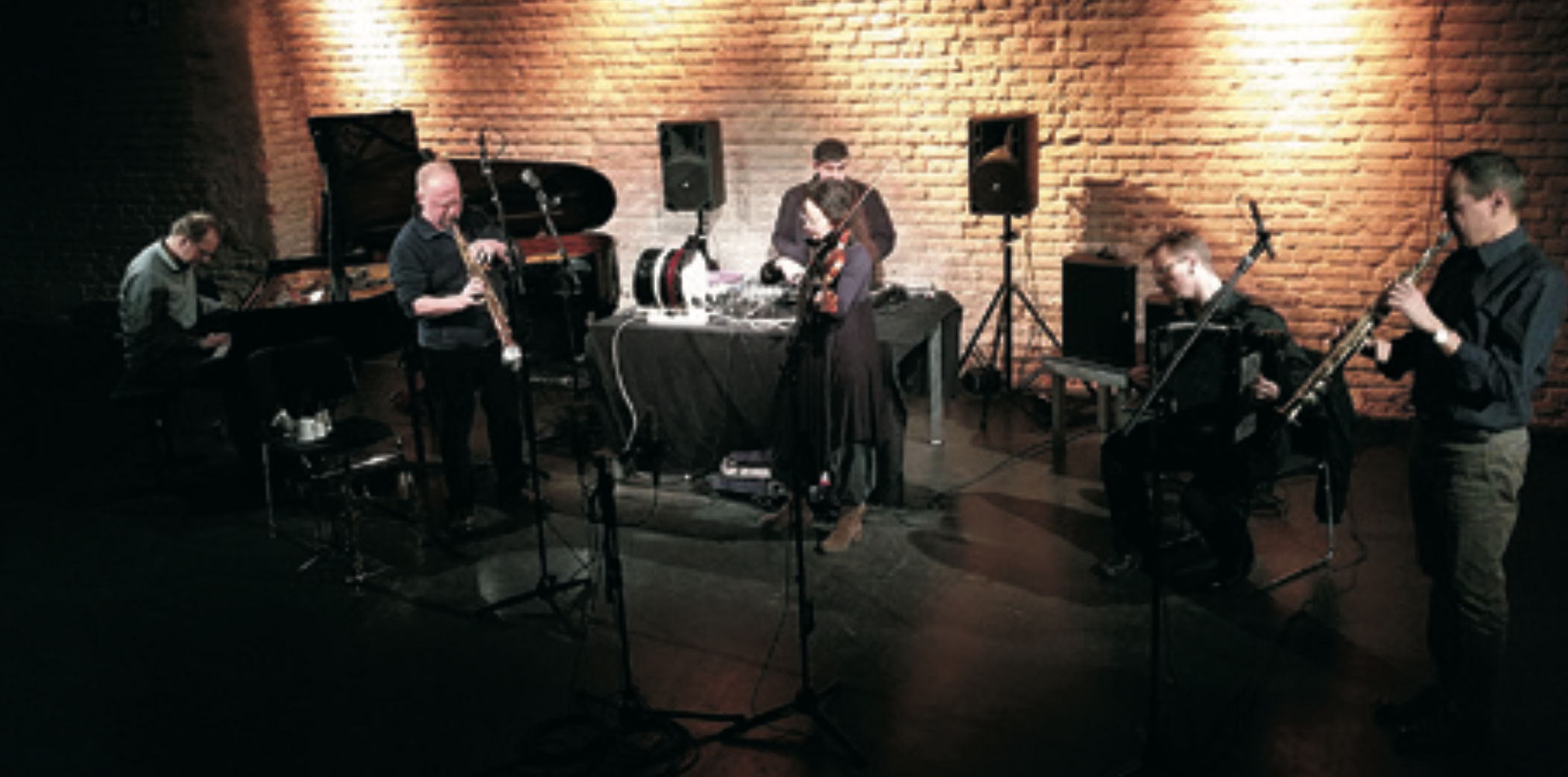The six-piece Sestetto Internazionale, assembled and led by Berlin-based soprano saxophonist Harri Sjöström in autumn 2015, is unique in many ways, with six voices, six perspectives and six personalities. It's hard to find an ensemble like this twice, unless you happen to be there twice when this orchestra plays. Even then, the experience is, one might say, almost guaranteed to be different, as it is performed entirely on an improvisational basis.
Two soprano saxophones, violin, piano, quartet harmonica and turntables with electronics combined into a coherent composition does not sound very conventional. Three melodic instruments operating at high frequencies and three instruments creating a unified line of rhythmic harmony and melody, where it's nice to "go crazy". Still, these lines don't matter that much, and it's not worth thinking about any more.
As six world-class improvisers search for their own sonic levels and ranges, combining them in a symbiotic relationship, the important thing is to listen. So it's not about a single solo around a theme, but about collective playing, following and discussing with others to create a coherent interaction.
Sestetto Internazionale is a full-blown shaper of whirling sonic patterns, a wild, uninhibited, unpredictable, multi-edged, boundary-seeking, unbridled, wildly joyous sonic creature, like an untamed coyote in the desert in search of scavenging.
Jazz is an interesting area of music because of its many different styles and variations. Improvisation is one of the most controversial areas, at least from the listener's point of view. What makes it different is the freedom, the freedom to break out of the mould, the freedom from compulsion, and the fact that there is no penalty for mistakes, if they can be considered to exist at all. For the ordinary listener, at least, it is impossible to find any fault at all. On the other hand, the possibility of failure always lurks in the air. If the 'scratching' of a turntable results in needle scratches and scratches, there is certainly no penalty. It is, as it were, part of the job.
The success of the ensemble is usually the result of the audience's reactions and comments, and these feed the players into ever more exhilarating strokes. At almost 80 minutes, Live In Munich 2019 is, as the title suggests, a concert recording from which this success is outpaced by the cheers of the audience.
The album is divided into three sections played together by the entire sextet and three sections where all the players get to perform as a duo in their own individual interplay. The lengths of the tracks vary widely. The album begins with a single, almost 40-minute-long track, Quasars -1, where everyone rips through delicious textures in a multicoloured palette ranging from small chords to hard, powerfully rising contributions. Styles get bounced from mood to mood and sometimes the playing even has solemnly pompous symphony orchestral catchphrases.
After this long opening, we hear three duo pieces. Notturno, a nocturnal composition by Alison Blunt and Gianni Mimmo, shows how the model improvisational collaboration between two instruments, violin and soprano saxophone, creates a picture of how it could be part of a symphony orchestra.
The collaboration between pianist Achim Kaufmann and "ragpicker" Ignaz Schick in Anak - 1 creates a strangely powerful image of how the versatile use of turntables and electronic buzz alongside the basic instrument suddenly functions as part of an orchestral foundation.
Well, how about how the duo of Veli Kujala and Harri Sjöström's collaboration with the accordion and saxophone comes to life. It starts as a thoughtful, exploratory chat, but turns quite quickly into a defiant tantrum. Like a stalking feline, the word-beam slowly begins to strike, escalating into a loud brawl and fight. As the tension intensifies, the result is a gloriously dizzying and contradictory exchange that escalates into a vicious and furious argument. Ruthless mutual rancour and outrage heat up the emotions, with a brutal splatter and roar roaring through the wall of sound before the final explosion. The ritualistic climax felt as if an enraged lion had opened its maw and devoured the duo in the maw of its throat. The audience, too, erupted into huge roars of applause.
The last two tracks on the album, Quasars - 2 and Little Piece, are a free-form effort developed by the entire six-piece together. At nearly fifteen minutes long, the artistically conceptual Quasars - 2 first landscapes the sonic imagery in a softly luscious way. Outlining at first in a relaxed, murmuring style its unified alignment in sound formation, the playing gets a wind in its sails and a powerful lift as the right pieces find each other. Painting is reinvigorated and solar energy is ignited.
The sounds of the instruments blend effectively as the tonal range increases. The frenetic, turbulent rushing erupts erratically towards the end with a genuinely original, rosy creative force, where the fierce clash of juxtaposed sounds is internalised. It's like a battle of wits where a fiery shingle bursts into flames. A good breakaway bumps into the eye like a herd of wild bulls let loose in the streets of Pamplona in a bull run.
It's a pleasure to break away and end the journey with a scheming but amusing 'divide and conquer' technique, skirmishing in a tantrum-inducing gleeful way in the collective, unfinished hopefulness of Little Fire.
"Sestetto Internazionale's hour and 20 minutes of Munich sound adventure is a wonderfully sweet listen. Time passes easily without much thought and without any unnecessary squeezing, just letting the sonic whirlwinds take over. The raucous rushing gravel sounds, hisses, coos, chuckles, rattles and rattles, crackles, thumps and bangs, splashes and splashes, thumps and thumps, whimpers and howls, find a surprisingly harmonious driving force, where despite everything, a certain rhythmic melodiousness and a coherent narrative whole can be found.

